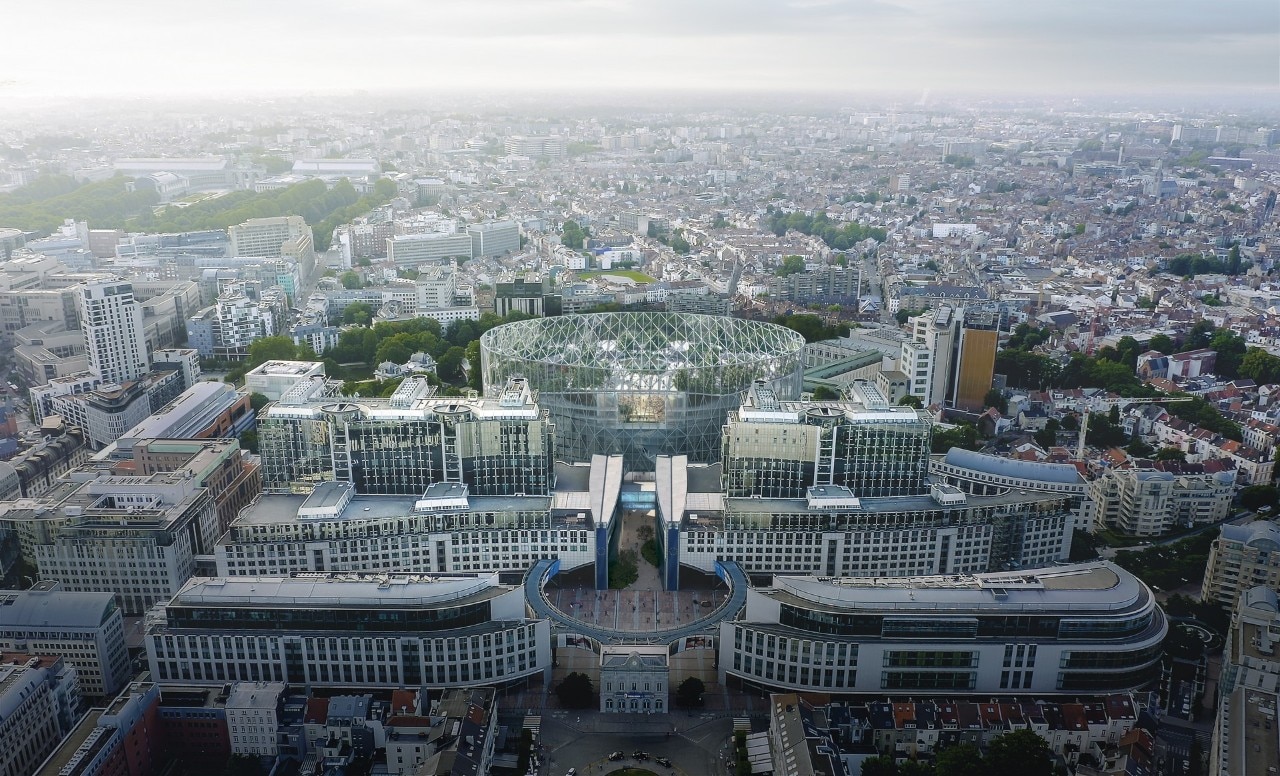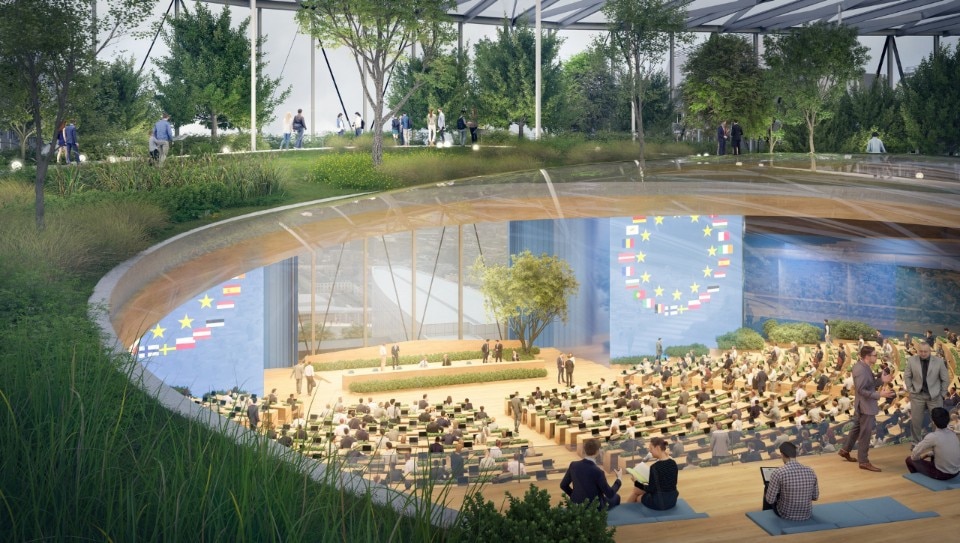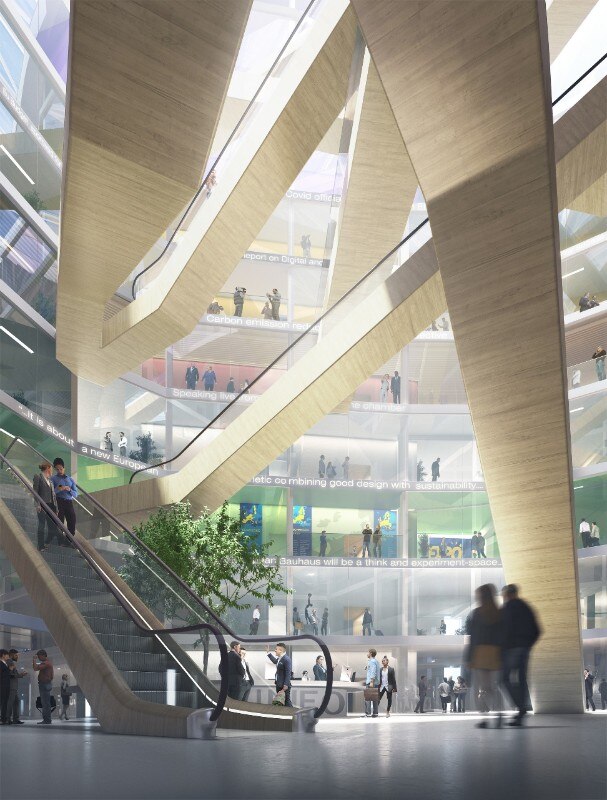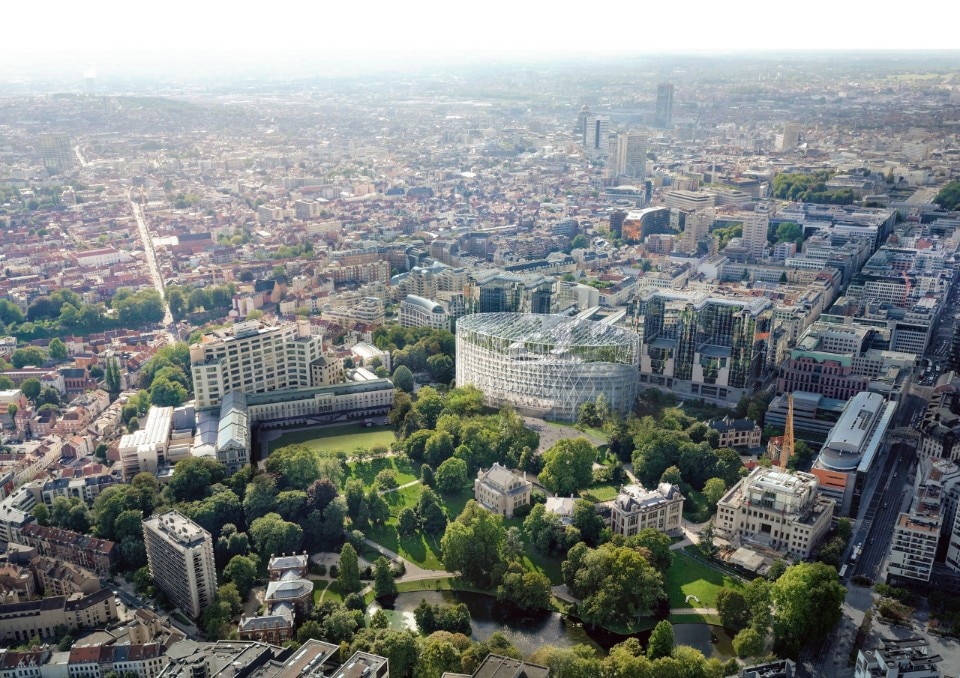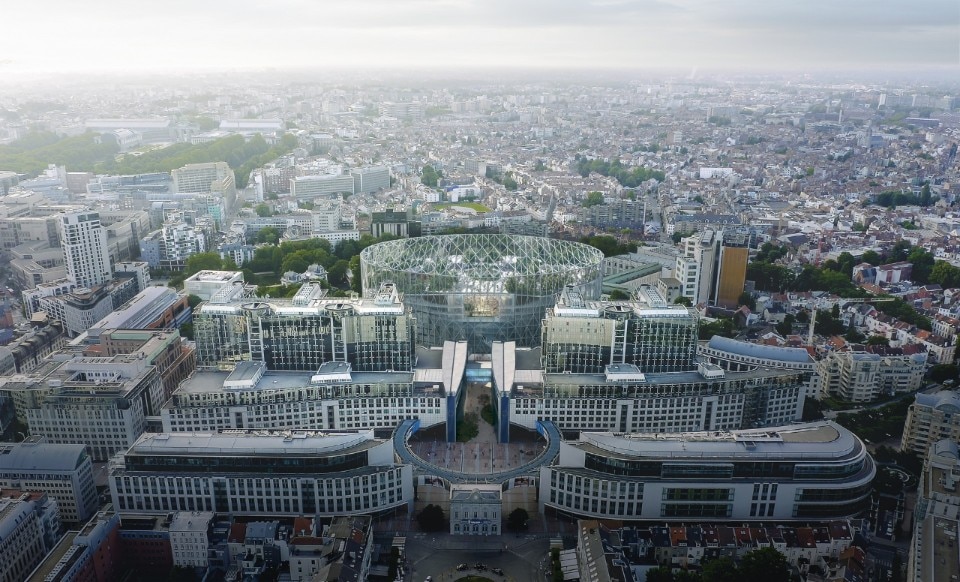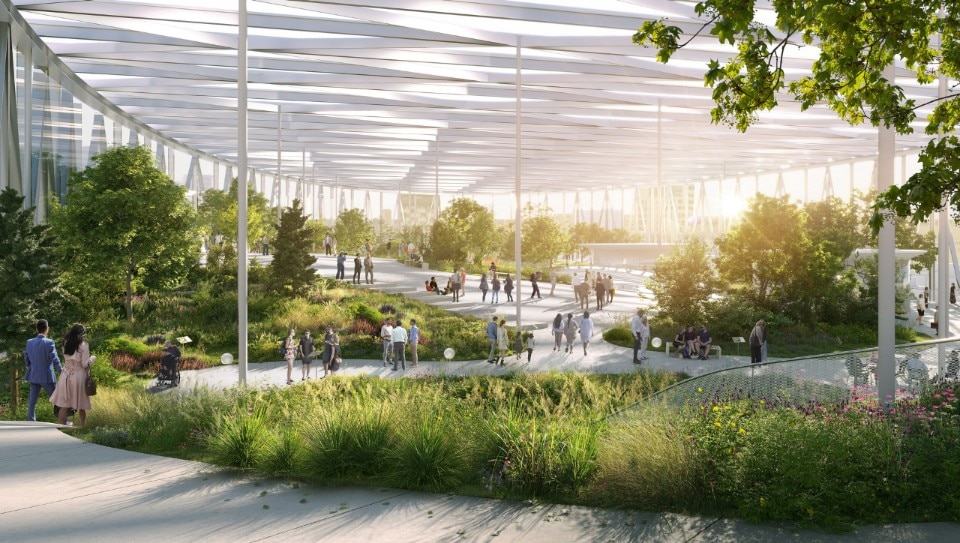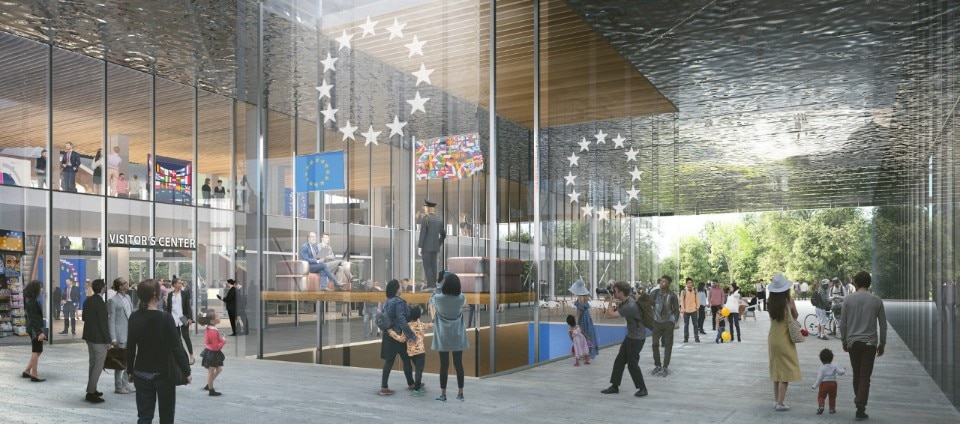The design collective EUROPARC – composed of Julien De Smedt Architects, Coldefy, Carlo Ratti Associati, NL Architects, and Ensemble Studio – won the international competition for the renovation of one of the European Parliament’s buildings, the Paul-Henri Spaak building, in Brussels. The project features a permeable structure with minimal environmental impact, including a green agora, seen as a space for sharing and exchanging ideas.
EUROPARC’s new Spaak building aims to create a civic ecosystem that puts people at the center of the spatial experience and brings them closer to the political processes. It will offer members of the European Parliament a space to carry out their parliamentary duties and citizens easier access to a place of significant political value.
Even if the current building has numerous deficiencies, tearing it down and replacing it was not the best thing to do in terms of sustainability. Because of that, the strategy of the proposal is to reuse most of the pre-existing structure and thus amortize the carbon footprint of its construction. “In the building sector, over 50% of the carbon footprint generated happens in constructing the raw structure of a building. If fully dismantled, all that [energetic] expense is lost and needs to be spent again on new construction,” the team at EUROPARC explains.
The design aims to strengthen the connection between the building and the community, by opening up the volume and improving the continuity of pedestrian flows. Public space will be expanded both inside and outside and a passage – that crosses the Parliament in an intuitive way – will provide a great entrance for visitors, creating also a significant node in the pedestrian network of the city.
The new assembly chamber of the European Parliament – “the Hemicycle” – will be transferred to the upper floors and it will be equipped with digital features that help spread the discourse of democracy beyond physical confines. The room will be also integrated with the Parliament’s digital platform, in order to enhance transparency and encourage external participation. Another key feature is the expansive windows, which will create a visual and symbolic dialog between the Parliament, the roof garden, the city, and European citizens. One of these windows serves also as a screen, useful to transmit information in real time during meetings.


